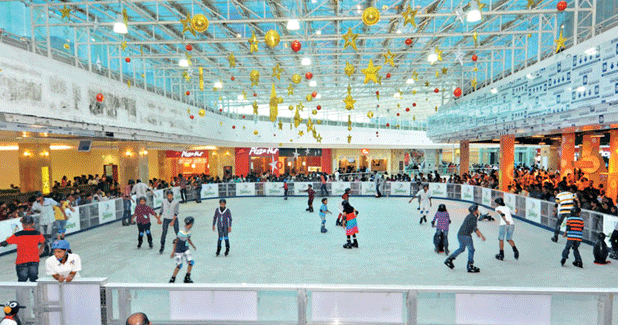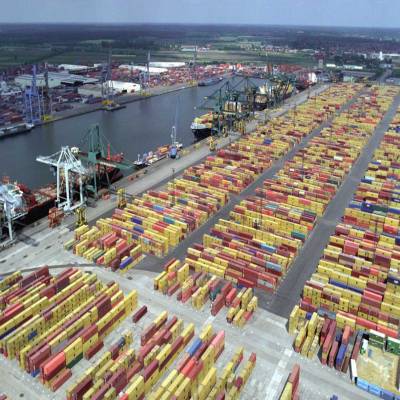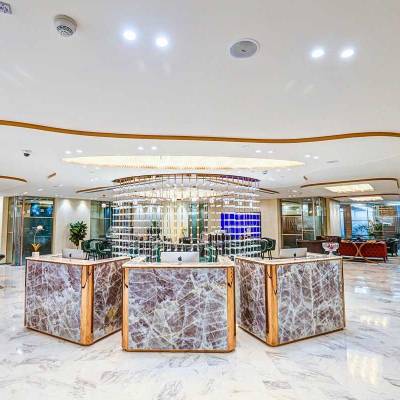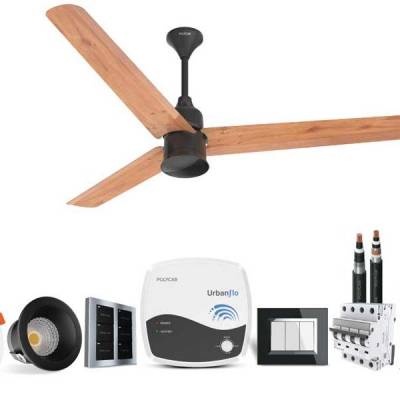- Home
- Infrastructure Energy
- POWER & RENEWABLE ENERGY
- Retail Strategies

Retail Strategies
Is there a success formula for shopping centre real estate? According to JLL, poorly built and operated malls recorded a 20 per cent vacancy rate in 2014. Good quality malls were relatively better off with about 10 per cent of vacant space. Notwithstanding economic cycles, strategies exist to minimise mall vacancies and create successful retail spaces.
Location is the key
Location, location, location is a cardinal rule of retail. Where in the city should you create a shopping centre? Which city has untapped demand for mall real estate? Ideally, build a mall in an area that is underserved in terms of shopping space and yet has a large enough catchment. As for the city, conduct a customer needs analysis and study the existing demand-supply gap to decide.
Overall, Tier-II and Tier-III cities have rising numbers of aspirational customers with growing purchasing power - a big positive. Several domestic and global brands are considering expanding their footprint in such cities. Also, most of these places are underserved, Kochi being an exception. It is home to Lulu Mall, currently India´s largest.
In contrast, Tier-I cities are fast reaching their retail real-estate saturation point. According to Shubhranshu Pani, Regional Director, Retail Services, JLL India, ¨In particular, growth in Tier-III cities will be driven by cost advantages in terms of lower land prices and, therefore, rentals. It makes sense for developers to target untapped Tier-II and Tier-III cities to gain first-mover advantage.¨
Recent notable quality mall developments in Tier-II and Tier-III cities include Trillium in Amritsar, North Country Mall in Mohali, Elante in Chandigarh and MBD Neopolis Mall in Ludhiana. However, Pani cautions developers to be aware of the salient challenges in Tier-II and III cities - the lack of physical infrastructure such as roads and concomitant facilities like power and water supply.
Design right
Knowing thy customer paves the way to retail success. Prior to designing the mall, developers must determine the target audience to create the right ambience. For instance, the interiors of premium malls targeting high-end customers must reflect luxury. Palladium in Mumbai calls itself a luxury mall. According to Rajendra Kalkar, Senior Centre Director (West), The Phoenix Mills Ltd, ¨Palladium´s geometric minimalism, striking Art Deco palette, Italian granite, strategically placed antique and authentic furniture and objets d´art create an ultra luxe ambience. Brands look for spaces that mirror their image. Our luxurious ambience has attracted luxury brands like Gucci, Jimmy Choo, Bottega Veneta, Zegna, Villeroy & Boch and Michael Kors. The combination of ambience and brands in turn creates a highly relevant space for premium customers.¨
The profile of consumers in the catchment area also defines the ideal tenant mix. Select Citywalk targets affluent female consumers in South Delhi. Therefore, it makes sense for it to house Indian boutique labels as well as international brands. In contrast, malls in smaller cities should house local brands alongside national and international brands that are willing to enter those markets. It´s best to maintain a balance of attractive retail categories and high rent-paying categories.
Mall design must also adhere to best practices like ensuring sufficient visibility for brands and zoning. The top crowd pulling zones are entertainment - multiplexes, gaming areas, kids´ areas, and F&B, which includes food courts, fine dining restaurants, pubs and lounges.
To compete with the growth of online commerce, malls must leverage their standout advantages, like being able to offer a sensual experience and doubling up as recreational and social spaces for families. ¨For this, malls need more empty spaces that can be used to conduct activities to engage customers and provide them a variety of experiences,¨ says Puneet Varma, General Manager, Marketing, Inorbit Malls. Inorbit Malls conducts 300 events per annum targeting all age groups, and exhorts its patrons to ´Come, Live an Inorbit Experience!´. Larger areas in its malls are earmarked for focused activities for customers.
Space can also be used for interactive engagements like local flea markets, live artist performances, exhibition areas and experiential areas for new products.
Mix the space use
¨Mall developers in India adopting the leasehold business model look for an internal rate of return between 17 and 21 per cent over a long (20-year) period,¨ says Aditya Sachdeva, Director, Retail Agency, Knight Frank (India) Pvt Ltd. If this seems hard to achieve, to enhance project viability, developers can create mixed-use spaces blending shopping, entertainment, hospitality and office areas. Offices create an in-house catchment for the shopping and entertainment areas.
¨Developers should opt for such flexibility when research and retailer feedback do not support the mall proposition and when they do not have deep pockets to sustain the mall solely as an independent shopping complex,¨ suggests Pani. ¨Mixed-use spaces also make sense when the development potential of a site is more than the demand for retail spaces. In such cases, additional FSI is planned as offices or hotels, as has been done in Ambience Mall Gurgaon and Select Citywalk Saket.¨
Sachdeva cites Cyber Hub in DLF Cyber City as a good example of a mixed development where the commercial spaces feed different retail zones, such as eateries and shopping areas.
Nowadays the lack of tenants is compelling some malls -mostly strata-sold, poorly-managed, badly-located ones - to convert into mixed-use spaces. ¨Pressed for returns, developers are integrating office components into existing malls. It helps that no special modifications or even procedural revamps are required to do so. Internal fit-outs are all that the occupying parties need to take care of,¨ says Pani. He cites Nucleus Mall in Pune and Vatika Mall in Delhi as good examples of malls where an office component has been successfully integrated.
Win-win business model
Traditionally, most malls in India have been strata sold, which means pre-selling shops to individual investors who then look for tenants. Selling strata allows developers to earn a quick buck and get out of the project quickly. This model most resembles how residential projects are executed, so it is only natural that the industry first applied it to shopping centre projects.
However, developers usually retain no control over the tenants of strata sold malls and as a result the shopping space can end up being occupied in a haphazard way, even by inferior brands. This takes away from the consumer experience. ¨Customers are attracted to shopping centres that offer them relevant choices - an optimum mix of shopping categories and brands, positioned to engage customers and enhance their shopping experience,¨ says Vivek Kaul, Head, Retail Services India, CBRE South Asia Pvt Ltd.
Industry leaders have, therefore, gravitated to a model proven in developed nations - leasehold organised malls wherein the developer retains control over the property and can choose who to lease out space to. ¨The developer can achieve the targeted brand mix and zoning goal in this manner. Zoning is practically impossible in strata sold spaces,¨ adds Kaul.
Developers that lease out space stay invested in the project in the long term. Their returns depend on the success of the shopping centre. ¨Selling strata yields around 6 to 8 per cent while developers can expect returns between 18 and 24 per cent from leasehold organised spaces,¨ says Susil Dungarwal, Chief Mall Mechanic, Beyond Squarefeet Advisory Pvt Ltd. ¨They also stand to gain from the appreciation of property. Monthly cash flows from the asset also prove extremely valuable for the developer.¨
The leasehold spaces strategy has paid off manifold in retail spaces like High Street Phoenix in Mumbai, Brigade Mall and Garuda Mall in Bengaluru, DLF Ambience in Gurgaon and Seasons Mall in Pune.
Tweaking the leasehold business model can help developers lessen their risk from holding onto the leasing rights. ¨Some developers are adopting a revenue share model that allows both developers and retailers to share equal stakes in the retail business. It involves brands paying a minimum guarantee or a percentage of their revenues on a monthly basis. Strong fashion apparel brands often operate on a pure revenue sharing model,¨ says Kaul.
Some developers are reducing their risk by selling some of the mall space. Esteem Mall and Sigma Mall in Bengaluru have followed this model. It helps attract investors looking for assured returns.
Manage malls well
Retailers are increasingly looking out for leasehold organised spaces as well as managed and maintained retail spaces where they can achieve higher profitability. ¨Developers that lease out mall space have a stake in its success, while most owners of strata-sold retail spaces have no such interest, and hence, critical qualitative aspects tend to be substandard,¨ says Pani.
Overseas retail brands only want to associate with leasehold format malls, likewise overseas real-estate investors. ¨Overseas companies are interested in time-bound investments, typically over a seven-year period, and hence look for leasing options,¨ explains Sachdeva.
Mall management includes services for retailers and customers provisioned by the developer or by a mall management company. ¨At High Street Phoenix, individual retailers are provided setup, logistical and operational support,¨ explains Kalkar. ¨We support retailer promos through in-mall signage, weekly e-mailers and through the mall´s social media platforms. Customer services primarily entail providing the best possible brand mix to customers, as well as hygiene and concierge services.¨
Successful mall management also entails making an effort to promote the tenant´s revenue. ¨Measuring the performance of a retail asset is a 360¦ affair involving more than tracking one return-on-investment figure,¨ adds Kalkar. ¨At High Street Phoenix, we measure the increase in footfalls every quarter and the increase in sales across all brands with respect to the operational costs of each retailer as well as the overall logistical and operational costs of the mall. We also monitor the qualitative impact of initiatives for the entertainment of patrons.¨
Work on these aspects and be sure retail spaces will work.
- CW
- Real estate
- JLL
- Lulu Mall
- Shubhranshu Pani
- Amritsar
- North Country Mal
- MBD Neopolis Mall
- Power
- Water Supply
- Rajendra Kalkar
- The Phoenix Mills Ltd
- Palladium
- Art Deco palette
- Italian Granite
- Ultra Luxe Ambienc
- Gucci
- Jimmy Choo
- Bottega Veneta
- Zegna
- Villeroy & Boch
- Michael Kors
- Puneet Varma
- Inorbit Malls
- Aditya Sachdeva
- Knight Frank (India) Pvt Ltd
- FSI
- Cyber Hub
- Vivek Ka
CW outlines strategies to make mall retail spaces successful. Is there a success formula for shopping centre real estate? According to JLL, poorly built and operated malls recorded a 20 per cent vacancy rate in 2014. Good quality malls were relatively better off with about 10 per cent of vacant space. Notwithstanding economic cycles, strategies exist to minimise mall vacancies and create successful retail spaces. Location is the key Location, location, location is a cardinal rule of retail. Where in the city should you create a shopping centre? Which city has untapped demand for mall real estate? Ideally, build a mall in an area that is underserved in terms of shopping space and yet has a large enough catchment. As for the city, conduct a customer needs analysis and study the existing demand-supply gap to decide. Overall, Tier-II and Tier-III cities have rising numbers of aspirational customers with growing purchasing power - a big positive. Several domestic and global brands are considering expanding their footprint in such cities. Also, most of these places are underserved, Kochi being an exception. It is home to Lulu Mall, currently India´s largest. In contrast, Tier-I cities are fast reaching their retail real-estate saturation point. According to Shubhranshu Pani, Regional Director, Retail Services, JLL India, ¨In particular, growth in Tier-III cities will be driven by cost advantages in terms of lower land prices and, therefore, rentals. It makes sense for developers to target untapped Tier-II and Tier-III cities to gain first-mover advantage.¨ Recent notable quality mall developments in Tier-II and Tier-III cities include Trillium in Amritsar, North Country Mall in Mohali, Elante in Chandigarh and MBD Neopolis Mall in Ludhiana. However, Pani cautions developers to be aware of the salient challenges in Tier-II and III cities - the lack of physical infrastructure such as roads and concomitant facilities like power and water supply. Design right Knowing thy customer paves the way to retail success. Prior to designing the mall, developers must determine the target audience to create the right ambience. For instance, the interiors of premium malls targeting high-end customers must reflect luxury. Palladium in Mumbai calls itself a luxury mall. According to Rajendra Kalkar, Senior Centre Director (West), The Phoenix Mills Ltd, ¨Palladium´s geometric minimalism, striking Art Deco palette, Italian granite, strategically placed antique and authentic furniture and objets d´art create an ultra luxe ambience. Brands look for spaces that mirror their image. Our luxurious ambience has attracted luxury brands like Gucci, Jimmy Choo, Bottega Veneta, Zegna, Villeroy & Boch and Michael Kors. The combination of ambience and brands in turn creates a highly relevant space for premium customers.¨ The profile of consumers in the catchment area also defines the ideal tenant mix. Select Citywalk targets affluent female consumers in South Delhi. Therefore, it makes sense for it to house Indian boutique labels as well as international brands. In contrast, malls in smaller cities should house local brands alongside national and international brands that are willing to enter those markets. It´s best to maintain a balance of attractive retail categories and high rent-paying categories. Mall design must also adhere to best practices like ensuring sufficient visibility for brands and zoning. The top crowd pulling zones are entertainment - multiplexes, gaming areas, kids´ areas, and F&B, which includes food courts, fine dining restaurants, pubs and lounges. To compete with the growth of online commerce, malls must leverage their standout advantages, like being able to offer a sensual experience and doubling up as recreational and social spaces for families. ¨For this, malls need more empty spaces that can be used to conduct activities to engage customers and provide them a variety of experiences,¨ says Puneet Varma, General Manager, Marketing, Inorbit Malls. Inorbit Malls conducts 300 events per annum targeting all age groups, and exhorts its patrons to ´Come, Live an Inorbit Experience!´. Larger areas in its malls are earmarked for focused activities for customers. Space can also be used for interactive engagements like local flea markets, live artist performances, exhibition areas and experiential areas for new products. Mix the space use ¨Mall developers in India adopting the leasehold business model look for an internal rate of return between 17 and 21 per cent over a long (20-year) period,¨ says Aditya Sachdeva, Director, Retail Agency, Knight Frank (India) Pvt Ltd. If this seems hard to achieve, to enhance project viability, developers can create mixed-use spaces blending shopping, entertainment, hospitality and office areas. Offices create an in-house catchment for the shopping and entertainment areas. ¨Developers should opt for such flexibility when research and retailer feedback do not support the mall proposition and when they do not have deep pockets to sustain the mall solely as an independent shopping complex,¨ suggests Pani. ¨Mixed-use spaces also make sense when the development potential of a site is more than the demand for retail spaces. In such cases, additional FSI is planned as offices or hotels, as has been done in Ambience Mall Gurgaon and Select Citywalk Saket.¨ Sachdeva cites Cyber Hub in DLF Cyber City as a good example of a mixed development where the commercial spaces feed different retail zones, such as eateries and shopping areas. Nowadays the lack of tenants is compelling some malls -mostly strata-sold, poorly-managed, badly-located ones - to convert into mixed-use spaces. ¨Pressed for returns, developers are integrating office components into existing malls. It helps that no special modifications or even procedural revamps are required to do so. Internal fit-outs are all that the occupying parties need to take care of,¨ says Pani. He cites Nucleus Mall in Pune and Vatika Mall in Delhi as good examples of malls where an office component has been successfully integrated. Win-win business model Traditionally, most malls in India have been strata sold, which means pre-selling shops to individual investors who then look for tenants. Selling strata allows developers to earn a quick buck and get out of the project quickly. This model most resembles how residential projects are executed, so it is only natural that the industry first applied it to shopping centre projects. However, developers usually retain no control over the tenants of strata sold malls and as a result the shopping space can end up being occupied in a haphazard way, even by inferior brands. This takes away from the consumer experience. ¨Customers are attracted to shopping centres that offer them relevant choices - an optimum mix of shopping categories and brands, positioned to engage customers and enhance their shopping experience,¨ says Vivek Kaul, Head, Retail Services India, CBRE South Asia Pvt Ltd. Industry leaders have, therefore, gravitated to a model proven in developed nations - leasehold organised malls wherein the developer retains control over the property and can choose who to lease out space to. ¨The developer can achieve the targeted brand mix and zoning goal in this manner. Zoning is practically impossible in strata sold spaces,¨ adds Kaul. Developers that lease out space stay invested in the project in the long term. Their returns depend on the success of the shopping centre. ¨Selling strata yields around 6 to 8 per cent while developers can expect returns between 18 and 24 per cent from leasehold organised spaces,¨ says Susil Dungarwal, Chief Mall Mechanic, Beyond Squarefeet Advisory Pvt Ltd. ¨They also stand to gain from the appreciation of property. Monthly cash flows from the asset also prove extremely valuable for the developer.¨ The leasehold spaces strategy has paid off manifold in retail spaces like High Street Phoenix in Mumbai, Brigade Mall and Garuda Mall in Bengaluru, DLF Ambience in Gurgaon and Seasons Mall in Pune. Tweaking the leasehold business model can help developers lessen their risk from holding onto the leasing rights. ¨Some developers are adopting a revenue share model that allows both developers and retailers to share equal stakes in the retail business. It involves brands paying a minimum guarantee or a percentage of their revenues on a monthly basis. Strong fashion apparel brands often operate on a pure revenue sharing model,¨ says Kaul. Some developers are reducing their risk by selling some of the mall space. Esteem Mall and Sigma Mall in Bengaluru have followed this model. It helps attract investors looking for assured returns. Manage malls well Retailers are increasingly looking out for leasehold organised spaces as well as managed and maintained retail spaces where they can achieve higher profitability. ¨Developers that lease out mall space have a stake in its success, while most owners of strata-sold retail spaces have no such interest, and hence, critical qualitative aspects tend to be substandard,¨ says Pani. Overseas retail brands only want to associate with leasehold format malls, likewise overseas real-estate investors. ¨Overseas companies are interested in time-bound investments, typically over a seven-year period, and hence look for leasing options,¨ explains Sachdeva. Mall management includes services for retailers and customers provisioned by the developer or by a mall management company. ¨At High Street Phoenix, individual retailers are provided setup, logistical and operational support,¨ explains Kalkar. ¨We support retailer promos through in-mall signage, weekly e-mailers and through the mall´s social media platforms. Customer services primarily entail providing the best possible brand mix to customers, as well as hygiene and concierge services.¨ Successful mall management also entails making an effort to promote the tenant´s revenue. ¨Measuring the performance of a retail asset is a 360¦ affair involving more than tracking one return-on-investment figure,¨ adds Kalkar. ¨At High Street Phoenix, we measure the increase in footfalls every quarter and the increase in sales across all brands with respect to the operational costs of each retailer as well as the overall logistical and operational costs of the mall. We also monitor the qualitative impact of initiatives for the entertainment of patrons.¨ Work on these aspects and be sure retail spaces will work.
























